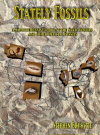
HOME
INTRO
SYMBOLS
ALMANAC
ECONOMY
GEOGRAPHY
STATE MAPS
PEOPLE
FORUM
NEWS
COOL SCHOOLS
STATE QUIZ
STATE LINKS
BOOK STORE
MARKETPLACE
NETSTATE.STORE
NETSTATE.MALL
GUESTBOOK
CONTACT US


Tweet
Double click on word for definition.
Vermont State Terrestrial Fossil
The Mount Holly mammoth tooth and tusk was adopted as Vermont's second official state fossil 11 years after its first, the white whale fossilized skeleton at the University of Vermont's Perkins Geology Museum. The Mount Holly mammoth tooth and tusk reside at the Mount Holly Community Historical Museum in Belmont, Vermont.
On February 5, 2014, House Bill No. 188 was introduced by State Representatives Dennis Devereux, of Belmont, Tim Jerman, of Essex Jct., and Will Stevens, of Shoreham. It was referred to the House Committee on General, Housing and Military Affairs where it languished.
BILL AS INTRODUCED H.188
2013 Page 1 of 3H.188
Introduced by Representatives Devereux of Mount Holly, Jerman of Essex, and Stevens of Shoreham
Referred to Committee on
Date:
Subject: General provisions; state fossilsStatement of purpose of bill as introduced: This bill proposes to designate the current state fossil, the white whale fossilized skeleton, as the state marine fossil, and to designate the Mount Holly mammoth tooth and tusk as the state terrestrial fossil.
An act relating to designating the Mount Holly mammoth tooth and tusk as the official state terrestrial fossil
It is hereby enacted by the General Assembly of the State of Vermont:
Sec. 1. FINDINGS
(a) Two excellent historical discoveries were made in the late 1840s during excavation for the Rutland and Burlington Railroad. The first, in 1848, was the discovery of the fossilized mammoth tooth and tusk in Mount Holly, and the second, in 1849, was the discovery of the fossilized white whale skeleton in Charlotte.
(b) The white whale fossilized skeleton, which was found in Charlotte in 1849 embedded in clay at the depth of about eight feet below the natural surface of the ground, was designated the state fossil in 1993.
(c)(1) The remains of the mammoth were found in 1848 during excavation for the Railroad where, at an elevation of 1,415 feet above sea level, the Railroad was to cross the ridge of the Green Mountains in Mount Holly. There, at the bottom of an 11-foot muck bed, workers found, resting upon gravel, a huge molar tooth weighing nearly eight pounds and having a grinding surface of approximately eight by four inches. Shortly thereafter, the workers found a large fossilized tusk of the mammoth that measured along its outer curve a length of 80 inches, and 12 inches at its greatest circumference.
(2) The Mount Holly mammoth tooth and tusk are now on display at the Mount Holly Community Historical Museum.
(3) Scientists believe the mammoth fossils were buried at the summit of the Green Mountains for more than 8,000 years, and that an adult mammoth would have been more than eight feet tall and 10 feet long, and would have weighed approximately 1.7 tons.
Sec. 2. 1 V.S.A. § 509 is amended to read:
§ 509. STATE FOSSIL FOSSILS
(a) The state marine fossil shall be the white whale fossilized skeleton at the University of Vermont’s Perkins Geology Museum.
(b) The state terrestrial fossil shall be the Mount Holly mammoth tooth and tusk at the Mount Holly Community Historical Museum.
House Bill No. 188 never made it out of committee.
But, at the end of February, House Bill No. 589, an act relating to hunting, fishing, and trapping, had been passed in the House and forwarded to the Senate for consideration. The bill was read for the first time and referred to the Committee on Natural Resources and Energy. Senate action on the bill was delayed until the first of April.
On April 10th, House Bill No. 589 was approved by the Senate, with amendments. Two of those approved amendments concerned House bills that had been ignored by the House. One of the amendments designated the Governor Aiken bucktail streamer the official fly-fishing fly of the State of Vermont. The other amendment re-designated the white whale fossilized skeleton at the University of Vermont's Perkins Geology Museum the official "state marine fossil" and the Mount Holly mammoth tooth and tusk at the Mount Holly Community Historical Museum the official "state terrestrial fossil" of the State of Vermont.
The Mount Holly mammoth tooth and tusk at the Mount Holly Community Historical Museum was adopted as the official "state terrestrial fossil" and the fossilized skeleton at the University of Vermont’s Perkins Geology Museum was renamed the official "state marine fossil" when Governor Peter Elliott Shumlin signed House Bill No. 589 on May 5, 2014.
Sources...
Amended House Bill No. 589The Vermont Legislative Bill Tracking System, 5 May 2014. Web. 7 May 2014.
Additional Information
Mount Holly Community Historical Museum: Official website.
State fossils:
Complete list of official state fossils from NETSTATE.COM

Stately Fossils
Stephen Brusatte
More symbols & emblems: Complete list of official Vermont state symbols from NETSTATE.COM.
Stately Fossils: A Comprehensive Look at the State Fossils and Other Official Fossils, by Stephen Brusatte. 234 pages, Fossil News (September 2002) This extensively illustrated volume covers every U.S. state fossil, state dinosaur, and state stone or gem that is a fossil. Taxonomy, morphology, paleoecology, history of discoveries, and even legislative antics are discussed. This is the only book available covering the state fossils.

